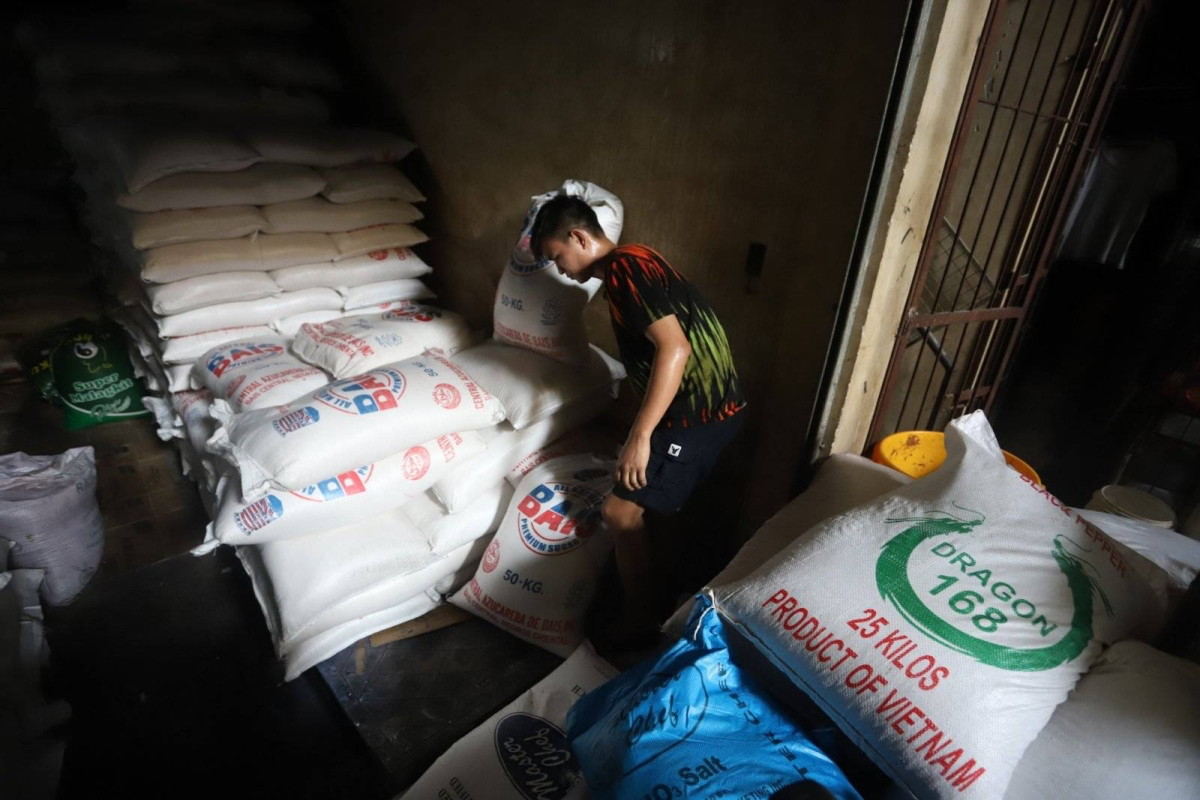A worker carries sacks of sugar at a retail store in Marikina City, on Tuesday, May 16 2023. President Ferdinand Marcos Jr. approved the importation of an additional 150,000 metric tons of sugar on Tuesday, May 16, 2023, to stabilize prices and bolster the nation’s supply. PHOTO BY JOHN ORVEN VERDOTE
The Philippines has not achieved sufficiency in rice, onion, chicken, and other commodities such as corn, coffee, garlic, peanut and mongo, the Food and Agriculture Organization (FAO) said.
The country, however, has a surplus of bananas, pineapple, mango, shrimps and prawns, and crabs, which are ideal for export, the FAO said in its Rapid Assessment of the Philippine Agri-food Systems.
The Philippine Statistics Authority (PSA) said the estimated palay production for January to March this year may have gone up to 4.80 million metric tons or by 5.7 percent, higher than its actual estimate of 4.54 million MT in the same period of last year.
In the fourth quarter of 2022, onion production was estimated at 10.58 thousand MT, growing by 23.3 percent from 8.58 thousand MT in the same quarter of 2021.
Total chicken production in 2022 was 1.87 million MT, indicating an annual growth rate of 7.0 percent from the previous year’s 1.74 million MT.
Corn production in the first quarter of 2023 also increased, to 2.560 million MT or by 4.9 percent from 2.44 million MT in the same period of 2022. The assessment also stated that food prices have increased. It particularly noted that the retail price of chicken meat rose by about P50 per kilo between 2019 and 2022.
Onion retail prices followed a seasonal pattern, where it peaks in the fourth quarter annually. The price of red onions in 2022 reached as high as P700 per kilo in December in the National Capital Region. FAO also said that natural disasters and climate change affected the country’s agricultural production.
“In the last five years, typhoons and other meteorological disasters such as extreme temperatures and storms caused damage amounting to P125.36 billion cumulatively, representing 82.99 percent of overall damages and losses to agriculture and fisheries,” the FAO said.
The Philippines ranked first in the World Risk Index for 2022 and 17th in the Global Climate Risk Index for 2021. The FAO noted an alarming increase in the number of outbreaks of animal and plant pests and diseases like the avian influenza in 2017, and African swine fever and fall armyworms in 2019. “These have contributed to losses from biological disasters amounting to P1.94 billion cumulatively,” it said.
In terms of food quality, the FAO said that because of the rising costs of a healthy diet, over 75.2 million Filipinos are unable to afford it in 2020. The 2022 State of Food Security and Nutrition in the World reported that the average cost of safe and nutritious foods that constitute a healthy diet is $4.1 (around P200) per person per day in the Philippines. With rising food costs and falling incomes, more Filipinos may be finding healthy diets unaffordable.
“The most common strategy used to cope with the lack of food or the money to buy food is to eat lower quality food,” the FAO said, adding that some households either restrict the consumption of adults for children to eat, decrease the meal size of members, or borrow food.
In 2022, it said the Philippines was 67th out of 113 countries in the Global Food Security Index (GFSI).
The GFSI showed that the Philippines had an overall food security score of 59.3. The country scored 71.5 in food affordability, 55.2 in availability, and 65.3 in quality and safety.
The country fared worst in “Sustainability and Adaptation,” where it received a score of 41.8 due to exposure risks to the agricultural water supplies, land deterioration and threats to marine biodiversity.

